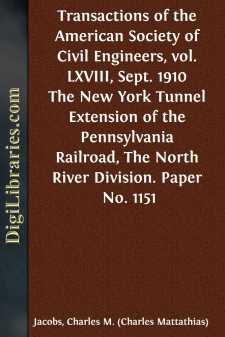Categories
- Antiques & Collectibles 13
- Architecture 36
- Art 48
- Bibles 22
- Biography & Autobiography 813
- Body, Mind & Spirit 142
- Business & Economics 28
- Children's Books 17
- Children's Fiction 14
- Computers 4
- Cooking 94
- Crafts & Hobbies 4
- Drama 346
- Education 46
- Family & Relationships 57
- Fiction 11829
- Games 19
- Gardening 17
- Health & Fitness 34
- History 1377
- House & Home 1
- Humor 147
- Juvenile Fiction 1873
- Juvenile Nonfiction 202
- Language Arts & Disciplines 88
- Law 16
- Literary Collections 686
- Literary Criticism 179
- Mathematics 13
- Medical 41
- Music 40
- Nature 179
- Non-Classifiable 1768
- Performing Arts 7
- Periodicals 1453
- Philosophy 64
- Photography 2
- Poetry 896
- Political Science 203
- Psychology 42
- Reference 154
- Religion 513
- Science 126
- Self-Help 84
- Social Science 81
- Sports & Recreation 34
- Study Aids 3
- Technology & Engineering 59
- Transportation 23
- Travel 463
- True Crime 29
Transactions of the American Society of Civil Engineers, vol. LXVIII, Sept. 1910 The New York Tunnel Extension of the Pennsylvania Railroad, The North River Division. Paper No. 1151
Categories:
Description:
Excerpt
These observations are written with the purpose of outlining briefly, as far as the writer was concerned, the evolution of the scheme of bringing the Pennsylvania Railroad and the Long Island Railroad into New York City, and also, as Chief Engineer of the North River Division of the New York Tunnel Extension of the Pennsylvania Railroad, to record in a general way some of the leading features of the work on this division, which is that portion of the work extending from the east line of Ninth Avenue, New York City, to the Hackensack Portal on the westerly side of the Palisades, as an introduction to the papers by the Chief Assistant Engineer and the Resident Engineers describing in detail the work as constructed.
It may be stated that, since shortly after the year 1871, when the Pennsylvania Railroad system was extended to New York Harbor through the lease of the New Jersey Lines, the officers of that company have been desirous of reaching New York City by direct rail connection.
The writer's first connection with the tunneling of the North River was early in 1890, when he was consulted by the late Austin Corbin, President of the Long Island Railroad Company and the Philadelphia and Reading Railroad Company, as to the feasibility of connecting the Long Island Railroad with the Philadelphia and Reading Railroad (or with the Central Railroad of New Jersey, which was the New York connection of the Reading) by a tunnel from the foot of Atlantic Avenue, Brooklyn, under the Battery and New York City, and directly across the North River to the terminal of the Central Railroad of New Jersey. Surveys, borings, and thorough investigations were made, and the Metropolitan Underground Railroad Company was incorporated in the State of New York to construct this railroad. Mr. Corbin, however, was aware that, in the transportation problem he had in hand, the Central Railroad of New Jersey and the Philadelphia and Reading Railroad were not as important factors as the Pennsylvania Railroad, and, in consequence, he abandoned the scheme for a tunnel to the Central Railroad of New Jersey for a line direct to the Pennsylvania Railroad terminal in Jersey City.
Meantime, the Pennsylvania Railroad Company, as a result of its investigation of the matter, in June, 1891, thought that the most feasible project seemed to be to build tunnels for rapid transit passenger service from its Jersey City Station to the lower part of New York, connecting there with the rapid transit systems of that city, and also extending under New York on the line of Cortlandt Street, with stations and passenger lifts at the main streets and elevated railroads.
The late A. J. Cassatt, then a Director of the Pennsylvania Railroad Company, and previous thereto as General Manager and Vice-President (and later as President) of that company, was deeply interested in obtaining an entrance into New York City, but was not satisfied with the proposed rapid transit passenger tunnels which required the termination of the Pennsylvania Railroad trains at its Jersey City Station. Therefore, upon his request, in September of the same year, another study and report was made by Joseph T. Richards, M. Am. Soc. C. E., then Engineer of Maintenance of Way of the Pennsylvania Railroad, on a route beginning in New York City at 38th Street and Park Avenue on the high ground of Murray Hill, thence crossing the East River on a bridge, and passing around Brooklyn to Bay Ridge, thence under the Lower Bay or Narrows to Staten Island and across to the mainland, reaching the New York Division of the Pennsylvania Railroad at some point between Rahway and Metuchen. Mr. Cassatt also had in mind at that time a connection with the New England Railroad, then independent, but now part of the New York, New Haven, and Hartford Railroad system, by means of the Long Island Railroad, and a tunnel under the East River, which in later years, as the result of further consideration of the situation, has been covered by the proposed New York Connecting Railroad with a bridge across the East River and over Ward's and Randall's Islands.
As a result of these investigations, the late George D....


